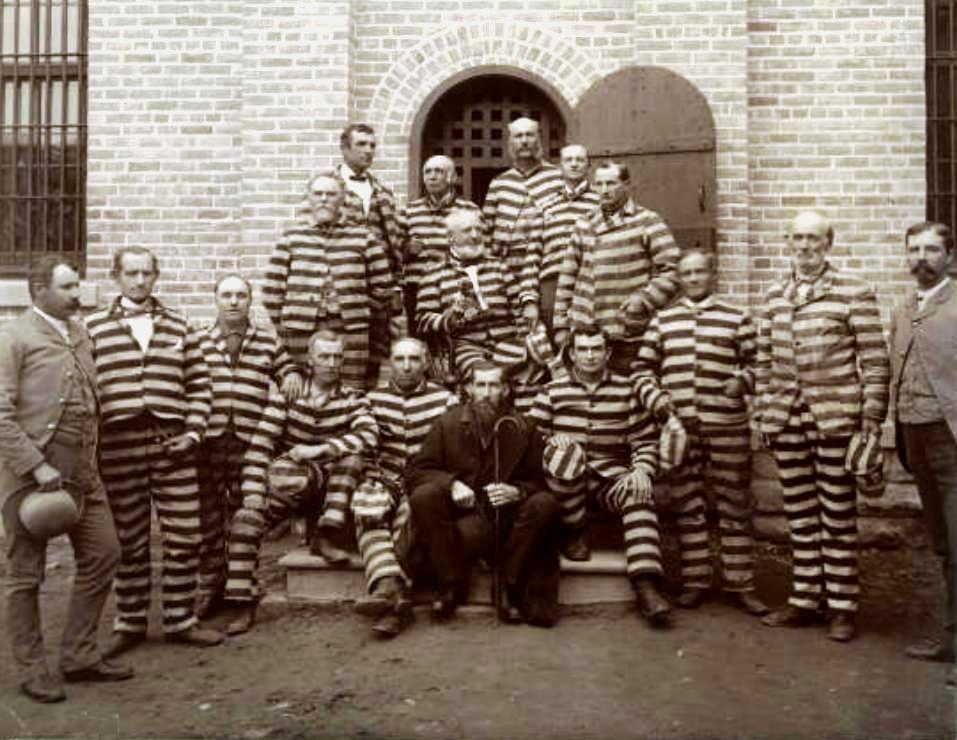Difference between revisions of "Edmunds Act of 1882"
m |
|||
| (3 intermediate revisions by the same user not shown) | |||
| Line 1: | Line 1: | ||
| − | Congress passed the Edmunds Act | + | Congress passed the '''Edmunds Act of 1882''', also known as the Edmunds Anti-Polygamy Act, making bigamy a felony and cohabitation a misdemeanor. Bigamy is the crime of marrying another spouse while one’s first, undivorced spouse is still living. Since it was difficult to obtain evidence that such bigamous marriages had occurred, the act made cohabitation, or living together with more than one spouse, a misdemeanor. This eliminated the need to prove that a marriage had taken place. The act was primarily aimed at members of [http://comeuntochrist.org The Church of Jesus Christ of Latter-day Saints] practicing plural marriage in Utah Territory. |
In addition, the act also prohibited polygamists from voting, holding public office, and serving on juries. The act was applied not only to individuals practicing polygamy or cohabitation, but also those who believed in the doctrine of plural marriage without actually practicing it. | In addition, the act also prohibited polygamists from voting, holding public office, and serving on juries. The act was applied not only to individuals practicing polygamy or cohabitation, but also those who believed in the doctrine of plural marriage without actually practicing it. | ||
| Line 13: | Line 13: | ||
==Sources:== | ==Sources:== | ||
| − | *http://en.wikipedia.org/wiki/Edmunds_Act | + | * [http://en.wikipedia.org/wiki/Edmunds_Act Wikipedia, "Edmunds Act"] |
| − | *http://eom.byu.edu/index.php/Edmunds_Act_of_1882 | + | * [http://eom.byu.edu/index.php/Edmunds_Act_of_1882 Encyclopedia of Mormonism, "Edmunds Act of 1882"] |
[[Category:Church History: Miscellaneous Topics]] | [[Category:Church History: Miscellaneous Topics]] | ||
[[es:Ley Edmunds de 1882]] | [[es:Ley Edmunds de 1882]] | ||
Latest revision as of 17:58, 13 May 2021
Congress passed the Edmunds Act of 1882, also known as the Edmunds Anti-Polygamy Act, making bigamy a felony and cohabitation a misdemeanor. Bigamy is the crime of marrying another spouse while one’s first, undivorced spouse is still living. Since it was difficult to obtain evidence that such bigamous marriages had occurred, the act made cohabitation, or living together with more than one spouse, a misdemeanor. This eliminated the need to prove that a marriage had taken place. The act was primarily aimed at members of The Church of Jesus Christ of Latter-day Saints practicing plural marriage in Utah Territory.
In addition, the act also prohibited polygamists from voting, holding public office, and serving on juries. The act was applied not only to individuals practicing polygamy or cohabitation, but also those who believed in the doctrine of plural marriage without actually practicing it.
Ramifications of The Edmunds Act
As a result of the Edmunds Act, nearly all of the public offices in Utah Territory were vacated. Boards were formed to certify individuals who neither practiced polygamy nor professed a belief in the doctrine of plural marriage. New public officials were elected.
More than 1,300 men were prosecuted, convicted, and imprisoned under the act’s terms. Women practicing polygamy were not prosecuted; they were seen as victims. However, plural wives were, in some cases, not granted spousal privilege and jailed for refusing to testify against their husbands.
The Edmunds Act of 1882 is not to be confused with the Edmunds-Tucker Act of 1888, which targeted Mormon polygamy more directly.
